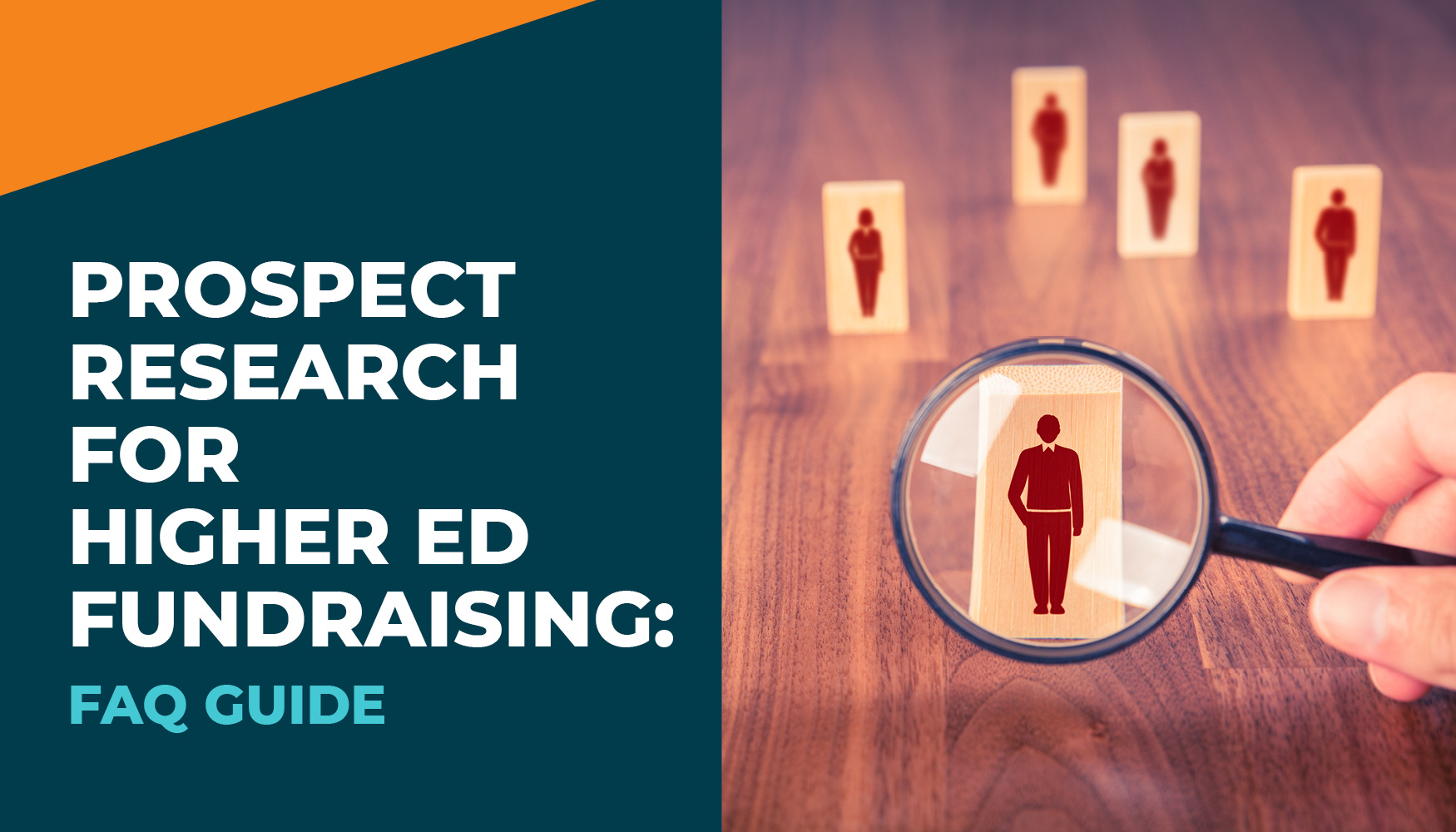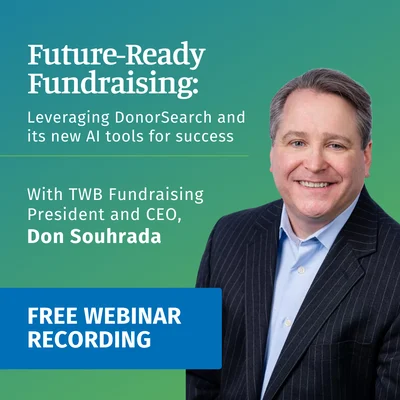Major donors are critical to your higher education institution’s success. Whether they provide funding for capital campaigns, research projects, scholarships, fellowships, or academic programs, their financial support and commitment allow your university to achieve its goals and advance its mission.
To cultivate these high-impact donors efficiently and effectively, you first need to identify top candidates who would be able and willing to fund your initiatives. The best way to go about this is by conducting prospect research.If you’re new to prospect research, you’ll likely have several questions going into the process. In this guide, we’ll answer three of the most commonly asked questions about prospect research for higher ed institutions, including:
- What is prospect research?
- What tools do I need to conduct prospect research?
- How do I apply prospect research data to donor cultivation?
While prospect research isn’t the only important aspect of major donor cultivation, it lays the foundation for your overall success. Let’s begin by defining the process and goal of prospect research.
What is prospect research?
DonorSearch’s prospect research guide defines prospect research as “a technique used by…fundraisers, major gift officers, and development teams to identify high-impact donors within and beyond an organization’s current donor pool. Through this process, nonprofits [and universities] gather an immense amount of data—information about donors’ backgrounds, past giving histories, wealth indicators, philanthropic motivations, and more.”
The goal of prospect research is to gain a holistic understanding of your institution’s prospective donors—not only if they’re financially able to contribute significant amounts, but also whether they’d respond positively to your donation requests. Your university’s fundraising team should look for the following three types of indicators when researching potential donors:
- Capacity indicators show whether a prospect is in a financial position to make a large gift to your higher ed institution. These include real estate ownership, SEC transactions, business affiliations, political giving histories, and other markers of wealth.
- Philanthropic indicators let you know if a prospect has charitable tendencies. The best markers of this are previous donations to your university and contributions to other higher ed institutions or nonprofits.
Affinity indicators demonstrate a prospect’s willingness to give to your specific institution. These include a deep love for or connection to your university (alumni, their parents, and retired faculty are often strong supporters of higher ed institutions), a history of non-donation engagement like event attendance or board service, and personal information such as interests and values.
When all three types of indicators are present in a potential donor, you’ve found a viable prospect to meet your university’s major gift fundraising needs!
What tools do I need to conduct prospect research?
Having access to the right software is essential for any fundraising process to be effective. Ensure your university’s software toolkit includes the following solutions before you start researching potential major donors:
- A robust supporter database. The best place to begin looking for major donor prospects is within your existing supporter base. Dig into your collected data to find previous major donors who might be interested in contributing to your current initiatives, as well as loyal mid-level donors who have the capacity to upgrade to the major donor level.
- A dedicated prospect research database. This type of third-party solution will supplement the information you’ve gathered on your university’s existing donors and identify brand-new prospects. Look for a platform that other higher ed institutions have leveraged, that pulls data from a variety of reputable sources, and is updated regularly so you can always find the most current information on your donors.
- A few types of AI tools that can enhance your results:
- Predictive modeling solutions that rate potential donors’ likelihood of giving and prioritize your prospect lists accordingly.
- Prospect reporting tools that organize and summarize data on individual prospects to provide actionable insights for more effective cultivation.
- Fundraising content creation tools that help you generate tailored communications for each prospect and automate outreach.
If your university leverages a corporate philanthropy platform in its fundraising efforts, that solution can also be helpful for prospect research. You can use it to look into potential donors’ work situations and identify opportunities for them to have their gifts matched by their employers.
How do I apply prospect research data to donor cultivation?
While high-quality data is important for identifying prospects and getting a general sense of their backgrounds, it should guide the actions your university’s fundraisers take to create true human connections. After conducting an initial round of prospect research, NXUnite’s donor relations guide recommends taking the following steps:
- Get to know potential donors. Set up one-on-one meetings with each prospect to share an overview of your university’s current goals and initiatives and ask them about their lives and interests. Take note of personal details they bring up so you can reference them in subsequent conversations. For example, if a prospect mentions in the initial discussion that their daughter is getting married in a few weeks, asking how the wedding was during your next meeting shows you care about them as a person.
- Communicate regularly. After your initial meeting, establish a regular follow-up cadence using the prospect’s preferred communication channel (email, text, phone calls, etc.). Share impact reports and updates about initiatives that the prospect was interested in and introduce them to other members of your staff or board. Always be honest and transparent in your communications to build trust with the prospect.
- Invite prospects to deepen their engagement with your university. Suggest opportunities for potential donors to get a firsthand look at your institution’s inner workings that align with their interests. For example, if a prospect is considering donating to support your performing arts program, invite them to an upcoming production and give them a behind-the-scenes tour of the theatre. This way, they can get a sense of your program’s successes to date and areas for improvement that their gift could support.
As you gather information about prospects through direct interactions, continue leveraging your prospect research tools to create a complete, up-to-date picture of each potential donor. This will allow you to make data-driven decisions about when and how to present them with a major gift solicitation.
Once a donor says “Yes!” to your university’s fundraising ask, use everything you learned about them during the prospect research and cultivation process to choose a recognition method that will resonate with them. Then, organize all of your data on them in your donor database so you can easily work on retaining their support long-term.




Comments
Questions or comments? Join the conversation!